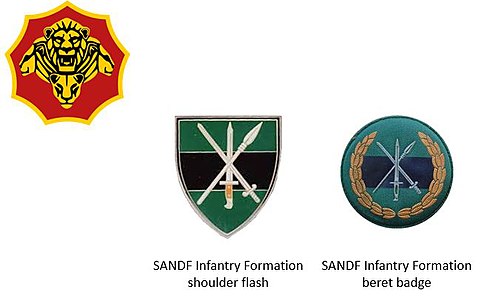This article needs additional citations for verification .(January 2021) |
| Regiment Piet Retief Regiment Transkei Regiment Noordoos-Kaap Regiment Piet Retief Nelson Mandela Regiment | |
|---|---|
 SANDF Regiment Piet Retief emblem | |
| Active | 1 January 1964 to present |
| Country | South Africa |
| Allegiance | |
| Branch | |
| Type | Infantry |
| Role | Light infantry |
| Size | One battalion |
| Part of | South African Infantry Formation Army Conventional Reserve |
| Garrison/HQ | Port Elizabeth Humewood, Algoa Military Base |
| Motto(s) | Ad Mortem (Til Death) |
| Commanders | |
| Current commander | Lt Col T.T. Ndengane |
| Honorary Colonel | To be appointed |
| Insignia | |
| Company level Insignia |  |
| SA Motorised Infantry beret bar circa 1992 |  |
| Abbreviation | NMR |
The Nelson Mandela Regiment (formerly Regiment Piet Retief) [1] [2] is a reserve infantry regiment of the South African Army.

